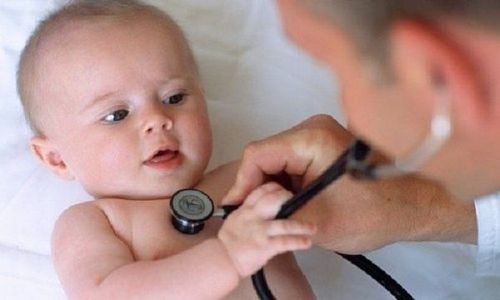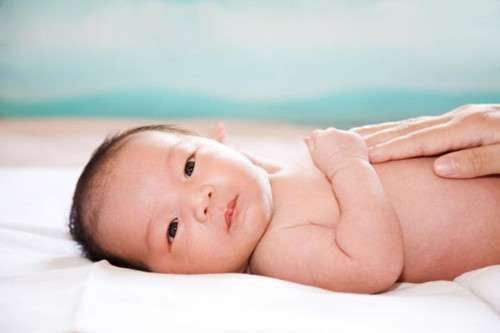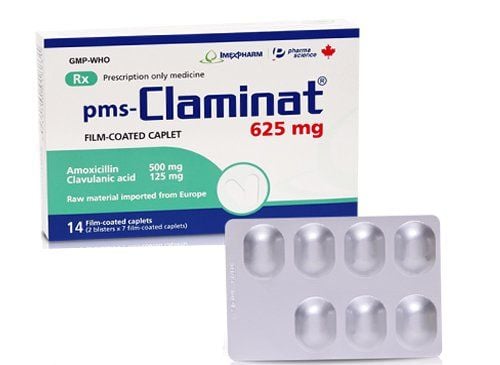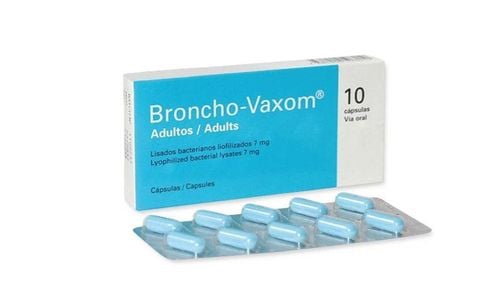This is an automatically translated article.
The article was professionally consulted with Master, Doctor Dang Xuan Cuong - Department of Emergency Resuscitation - Vinmec Hai Phong International General Hospital.If the child has a respiratory disease including pneumonia, most will have a change in breathing, so in the absence of obvious symptoms, parents should monitor the child's breathing to detect signs abnormalities of the respiratory tract.
1. What is a child's normal breathing rate?
Respiratory rate is the number of breaths a person takes in a minute and is one of the very important vital signs, along with blood pressure, pulse and temperature. When inhaled, oxygen enters the lungs and travels to the organs. When you exhale, carbon dioxide leaves the body. Normal respiratory rate plays an important role in keeping the balance of oxygen and carbon dioxide.
Normal breathing rate of children varies according to different ages, specifically as follows:
0 to 6 months: 30-60 beats/minute 6-12 months: 24-30 beats/minute 1 year to 5 years old: 20-30 beats/min 6 years old to 12 years old: 12-20 beats/minute 12 years old and up: 12-20 beats/minute.
2. How to count like a child's breathing
It is best for parents to count the breathing rate when the child is asleep, you count when the child has no fever or only has a slight fever (under 38 degrees), pull up the child's shirt to observe the child's abdomen and chest. If the child is not sleeping, the parents hold and hold the child still, without crying and without stimulation. Each time the baby's belly rises and falls, it is counted as 1 breath and parents must count correctly within 1 minute.
3. When to take the child to the doctor?

Thở nhanh có thể là một triệu chứng của một số bệnh đường hô hấp và phổ biến nhất là bệnh viêm phổi
Go to a medical facility for an examination with a pediatric respiratory specialist in the following cases:
Children under 1 year old and breathing more than 60 breaths/minute. The child is 1 to 5 years old and breathes more than 30 breaths per minute. If your child is older than that, call the doctor if he has to gasp more than usual after exercise or even just during normal activities. If the child's shortness of breath continuously appears, you should also take the child to be checked at a medical facility.
Tachypnea can be a symptom of a number of respiratory diseases and most commonly pneumonia. Illnesses can happen after your child has a cold or flu that is caused by a virus or bacteria. Symptoms of associated pneumonia: Shortness of breath; Wheeze; Cough.
4. What if the child is not breathing?
The baby may stop breathing for 5 or 10 seconds which is normal, then breathe normally again. But if it lasts for more than 10 seconds or the child begins to turn blue or purple, get medical attention right away.
If your child is panting while sleeping, it could be a sign of sleep apnea. This syndrome is common in children between the ages of 2 and 8 and is often accompanied by other symptoms, such as snoring.
5. Some tips for parents to monitor their baby's breathing

Nếu lo lắng vì thấy bất kỳ dấu hiệu nào bất thường trong nhịp thở của trẻ, bố mẹ không nên ngần ngại liên hệ với bác sĩ để xin ý kiến tư vấn
If you are worried because you see any abnormality in the child's breathing, parents should not hesitate to contact a doctor for advice. Irregular breathing can be very dangerous, so if not treated promptly can affect the life of the child. Here are some tips for parents to monitor their child's breathing:
Regularly monitor the child's typical breathing pattern so that parents can accurately identify when the child has strange signs in the breathing compared to the child at normal often. Take a video of your baby's breathing that you suspect is abnormal and show it to the doctor. Many doctors can now use the internet for remote support and diagnosis, saving you time from having to go directly to a medical facility. Always put your baby to sleep on his or her back. This will reduce your baby's risk of sudden infant death syndrome. Use physiological saline to clean the nose and throat. Sometimes, children breathe fast due to the weather being too hot or angry. Parents should dress the baby in breathable fabric in the summer and keep the baby warm in the winter. Vinmec International General Hospital examines and treats respiratory diseases, head and neck tumors, congenital malformations in the ear, nose and throat area with the most optimal internal and surgical methods for patients, both children and adults. Modern equipment system, sterile space, minimizing the impact as well as the risk of disease spread. Along with that is the dedication from the doctors with professional experience with pediatric patients, making the examination no longer a concern of the parents.
Please dial HOTLINE for more information or register for an appointment HERE. Download MyVinmec app to make appointments faster and to manage your bookings easily.
References: Webmd.com and Healthline.com












